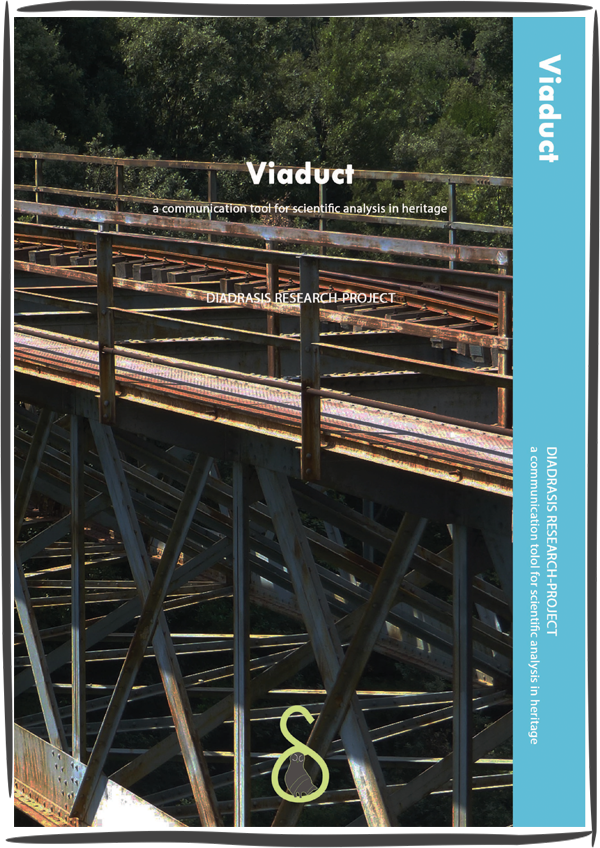Viaduct, a communication tool for scientific analysis in heritage
a communication tool for scientific analysis in heritage
Viaduct has been a research conducted by DIADRASIS with main aim was the creation of comprehension tools for bridging communication gaps of di?erent heritage professionals on scientific analysis for the Built Heritage.
In the handbook the research team categorized and explained 21 most commonly used methods for characterization and dating of the Built Heritage. Viaduct handbook is not meant to compete with the extended scientific literature but to become a friendly for the user tool of research.

INDEX
INDEX
Acknowledgements
INTRODUCTION
Analyses’ type diagram
Material-question table
CHARACTERIZATION METHODS
1. Scanning electron microscopy (SEM) – scanning electron Microscopy with energy dispersive x-ray spectroscopy (SEM-EDX or SEM-EDS)
2. X-ray fluorescence (XRF)
3. Particle induced x-ray emission (PIXE)
4. Neutron activation analysis (NAA)
5. Inductively coupled plasma atomic emission spectroscopy (ICPAES), Inductively coupled plasma mass spectrometry (ICP-MS), laser Ablation inductively coupled plasma mass spectrometry (LA-ICP- MS)
6. Fourier transform infrared spectrometry (FTIR)
7. Raman spectroscopy
8. Ultraviolet (UV) fluorescence spectroscopy
9. Chromatography
10. Thermal analysis
11. X-ray diffraction (XRD)
12. Biological cultures
13. Optical microscopy (OM)
14. Granulometry
15. Porosimetry
16. Infrared (IR) thermography
17. Electrical conductivity testing
DATING METHODS
18. Dendrochronology
19. Luminescence dating (TL/OSL)
20. Radiocarbon dating
21. Archaeomagnetism (AM)
CONCLUSIONS
APPENDIX
Abbreviations
Visual glossary
Glossary
Please email the copy of your bank or paypal transaction together with your full postal address to diadrasis@diadrasis.org
